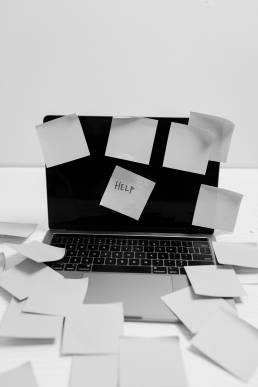Burnout Risks for 2022
Burnout is about to be re-classified showing the significant risks this could pose to your organisation in 2022.
The re-classification put the onus on the company, meaning it is not just down to the worker. Poorly managed stress in the workplace can lead to many organisational problems, don’t let burnout be a problem for your organisation in 2022.
If you would like to discuss this further get in touch today.
THE Burnout syndrome is changing and has already set a date. January 2022, the new classification of the World Health Organization (WHO) comes into force (WHO), ICD 1
1. This treats burnout differently – and companies must be aware of this risk.
In the words of the text, the syndrome is officially referred to as “chronic work stress that has not been successfully managed”. In the previous text it was still considered a mental health problem and a psychiatric illness.
The change took place at the organization’s conference in 2019, but the document will take effect from next year. To amend the document, WHO is analyzing health statistics and trends.
The text is a treatise to identify diseases and health problems in the world according to the same definitions and codes. In addition to burnout, ICD 11 also includes post-traumatic stress disorder, gambling disorders and antibiotic resistance in the list of diseases.
What is Burnout Syndrome now?
In 2019, the WHO classified burnout as a “work-related phenomenon” and describes its symptoms as:
- Feeling of exhaustion
- Cynicism or negative feelings about your job
- reduced professional effectiveness
For Roberto Aylmer, doctor, PhD and professor at Fundação Dom Cabral, the change in classification makes the connection between the illness and the work environment a direct and indirect interpretation of the company’s responsibility for the holistic health of its employees.
“If they call it work-related illness, it’s clear, not the worker. Badly managed stress becomes a chronic problem related to problems in the workplace and in corporate governance, ”he says.
According to the expert, the recognition by the WHO will have an impact on labor law processes in this area. If the employee goes to court for exhaustion, the company can be held liable and even pay damages.
According to the doctor, the implication of responsibility is already happening, but it can be difficult to achieve.
“With this classification, the company is to blame if the doctor makes the diagnosis. It is not the person who is too demanding, perfectionist or belonging to a more vulnerable profile, it is no longer just an internal requirement, ”he says.
In court, the company’s liability is assessed on the basis of the medical report proving the burnout, along with the employee’s medical history and an assessment of the working environment, including the collection of witness reports. In general, evidence is collected of emotional degradation and factors causing the syndrome, such as bullying, unrealistic goals, or aggressive demands.
Aylmer explains that it is common for burnout professionals to have a history of good performance that stems from a change in the environment, such as a change in management or demand.
According to the Zenklub Corporate Well-Being Index 2021, which is published exclusively by EXAME, the burnout warning sign must be switched on in most companies.
With a score of 49.25 for the general index of wealth in the Brazilian market on a scale of 0 to 100, Brazilian companies were below the ideal index of 78. The survey received more than 1,600 responses from employees in 335 companies.
Depending on the grade, some factors had a positive or negative influence on these general data. The highest positive score was obtained for relationships with colleagues with 74.68. Among the factors that negatively impacted overall wellbeing, burnout is considered to be the biggest warning as professionals report burnout symptoms.
Two other factors appear as warnings for more preventive work. Second, the high demand and control over work robs autonomy and can lead to burnout. And thirdly, the factor of supplementary work shows that the feeling of being overwhelmed increases with the skilled workers.
What do companies have to do now?
If burnout and stress used to worry personnel management due to a lack of commitment, lower productivity or the loss of skilled workers, now burnout is gaining another legal and financial risk factor.
For Rui Brandão, doctor and founder of Zen Club, companies need to take a more proactive stance on holistic health issues in order to reduce risks.
“It is necessary to bring elements in so that everyone becomes aware more quickly and can take preventive action,” he says.
The executive found that companies had unstructured policies in dealing with the issue and with little or no effectiveness. It was a yoga class, a disused office decompression room, or an occasional conversation about mental health.
“There is a lack of coherence and strategy,” says Brandão.

